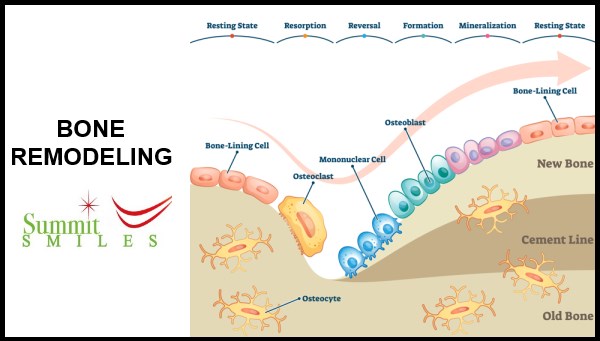
Bone remodeling, also known as bone metabolism, occurs when worn-out bone tissue is eliminated from the skeleton by bone resorption. Following that, ossification forms a new bone. All bones in the body are affected by the bone remodeling process.
When does bone remodeling occur?
The process of bone remodeling occurs throughout a person’s life. The skeleton of a one-year-old newborn is essentially replaced by bone remodeling, however the process slows with age.
How does Bone Remodeling help Dental braces to shift your teeth in place?
When continuous pressure is applied to your teeth over time, the bone remodeling process assists Dental braces in shifting our teeth into place.
The teeth are embedded beneath the gum line in the jawbone, and the tooth roots are surrounded by a tiny gap of gum tissue called the periodontal ligament, which is made up of elastic fibers that connect the teeth to the bone.
This ligament compresses on either side of the tooth roots when the wires and brackets apply pressure on your teeth, causing them to become loose. To support the tooth in its new place, the alveolar bone in the jaw undergoes deposition on one side and resorption on the other.
The archwires of braces are adjusted to maintain the proper force on the teeth to induce movement. You will notice that your adjustments are usually scheduled every six weeks. This is to allow enough time for the teeth to move and the bone to restructure and adapt.
How does Bone Remodeling help when Dental Implants are placed?
Bone remodeling aids in the placement of dental implants by boosting the rate of bone development.
Bone remodeling can be advantageous and is viewed as a prophylactic step against microdamage caused by recurring stresses. Dental implants encourage bone formation because they are fixed in the jawbone. Instead of hindering jawbone development, dental implants promote it.
